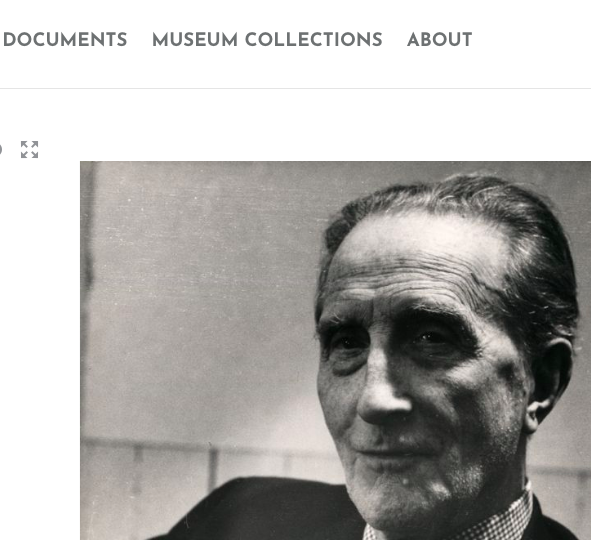If it isn’t Mauricio Cattelan’s Ninth Hour sculpture of Pope John Paul II crippled by a boulder, it’s a crucified frog.
Pope Benedict XVI has condemned a sculpture of a crucified frog on display at a museum in Bolzano, Italy, the Italian news agency ANSA reported. …The work, by the German artist Martin Kippenberger, who died in 1997, depicts a frog nailed to a cross with a mug of beer in one hand and an egg in the other.
It’s not known if the beer is German or Budweiser, or if the egg is organic. From the NY Times.
August 28th, 2008 by Sergio Muñoz Sarmiento in
Art Law
A Muslim woman was asked to leave a Roman museum because she was wearing a veil. The woman, visiting Venice’s Ca’ Rezzonico museum, which houses 18th-century Venetian art, was with her husband and children, and had cleared security when she entered the building.
When she reached the second floor, a room guard told her she must remove her “niqab”, which leaves only the eyes visible, or leave. The woman was believed to have been a member of a well-off family visiting Venice from Saudi Arabia or a Gulf state. She refused to take off the veil and left the building, which faces Venice’s Grand Canal and houses works by such 18th century Venetian masters as Giandomenico Tiepolo. The guard, whose name was not disclosed, was hailed as a hero by some in the Veneto region.
According to Yahoo!News UK & Ireland, “Italian anti-terrorism laws from 1975 ban people from wearing face coverings in public but they are rarely enforced in cases of Islamic veils.”
More here.
We’ve refrained from writing about the Iowa deaccessioning fiasco primarily because, as we have noted before, this issue is one that creeps up with such frequency (almost one a week) that it would dictate it’s own blog (so we’re starting one. Look for it in the near future, sponsored by Merrill Lynch, Sotheby’s and Christie’s).
We confess: we are on Michael Asher’s side (one which looks to donor intent and wish and not art as a means to pay off Am-Ex bills). In today’s Wall Street Journal, Eric Gibson has poignant argument against the selling off of artwork (sorry, no link). He asks, “How can we turn back the tide of reckless capitalization of museum collections?” and answers quite beautifully by stating that if colleges go this route, then they’ll do so at the expense of funding and support from the NEA and the NEH (along with other grantors that follow their lead).
Read the rest of this entry »
August 22nd, 2008 by Sergio Muñoz Sarmiento in
Art Law
Joseph Menn of the LA Times has a lengthy article today concerning the (very likely) possibility that the young Mickey Mouse may not be protected by copyright.
Is it possible that Mickey Mouse now belongs to the world — and that his likeness is usable by anybody for anything?
For the record, any knock-offs would have to make clear that they did not come from Disney, or else risk violating the separate laws that protect trademarks. And the potentially free Mickey is not the most current or familiar version of the famous mouse. Copyright questions apply to an older incarnation, a rendition of Mickey still recognizable but slightly different. Original Mickey, the star of the first synchronized sound cartoon, “Steamboat Willie,” and other early classics, had longer arms, smaller ears and a more pointy nose. The notion that any Mickey Mouse might be free of copyright restrictions is about as welcome in the Magic Kingdom as a hag with a poisoned apple. Yet elsewhere, especially in academia, the idea has attracted surprising support.
Check out a slide-show of Mickey throughout the years. Spain’s El Pais has their version of this story here.
August 21st, 2008 by Sergio Muñoz Sarmiento in
Art Law
“Birds Nest, in the Style of Cubism,” a painting by Zhang Hongtu, … was supposed to be in Beijing during the Olympic Games, in the exhibition “Go Game, Beijing!” organized by a Berlin marketing firm and displayed at the German Embassy. But it was seized by Customs on arrival and denied entry as “unacceptable” for its color, its depiction of the stadium, and its inscriptions.
The ashen-brown picture shows the gleaming new Olympic stadium, designed by the Swiss architects Herzog & de Meuron, as Piranesi might have imagined it and Picasso painted it — as a decaying ruin rendered in fragmented angled forms. On the canvas, cubist-style, are inscriptions in English letters and Chinese characters: “Tibet,” “human right” and the Olympic motto, “one world, one dream.”
The WSJ has the full story here.
August 20th, 2008 by Sergio Muñoz Sarmiento in
Art Law
“An artwork intended to be a commentary on the smoking ban may never see the light of day – because of the smoking ban. US artist Norma Jeane…wanted to create three transparent booths, each just big enough for one person to stand in and smoke.”
Jeane “intended to highlight the fact that the once social activity of smoking has been transformed through legislation into an antisocial act. The Straight Story, as the work is titled, was commissioned by Frieze, one of the biggest art fairs in the world[.] Members of the public were to be invited to smoke inside the booths, which would stand within the Frieze tents. But Westminster council has rejected an application for the ‘smoking booth’ art installation on the grounds that it has insufficient ‘artistic merit’.” More from The Guardian here.
August 19th, 2008 by Sergio Muñoz Sarmiento in
Art Law
After losing to Argentina 3-0 in Olympic soccer, the Brazilian soccer team has something else to celebrate. “The Estacao Pinacoteca museum’s stolen print “Minotaur, Drinker and Women,” by Spanish artist Pablo Picasso, was recovered Monday, Brazilian police announced. The piece, which was stolen from the Sao Paulo museum on June 12, was the last one of four stolen artworks to be recovered.” More here.







